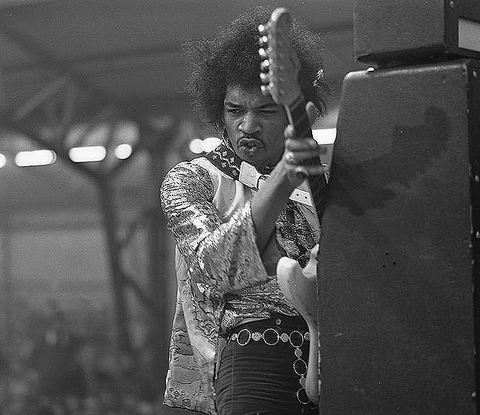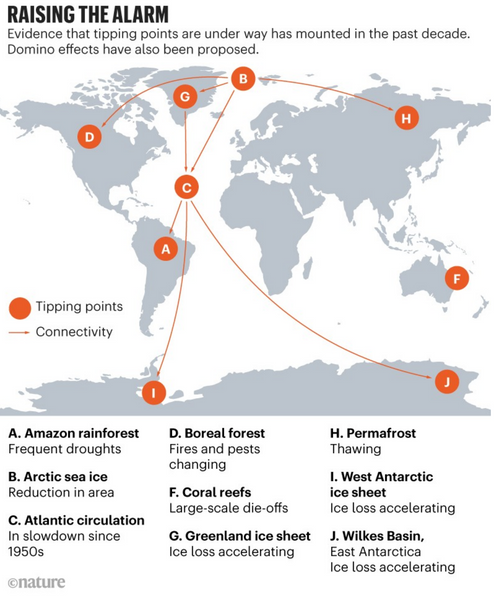What Jimi Hendrix Can Teach Us About Solving Climate Change
If we’re going to solve climate change, we need to have a better story about both the problems and the solutions.
Most people think about solving climate change in the wrong way, using a slow "cause and effect" framework. We need a better story that can accelerate the solutions to match the rate of rapid global warming.
Fortunately, Jimi Hendrix can help explain new way to think about solving climate change. The key is to understand the principle of “feedback”.

Jimi had a technique of playing his electric Stratocaster right next to an amplifier, which would create a "feedback loop" between the speaker and the guitar strings - and create highly amplified and distorted sound.
Feedback is the greatest problem with climate change. Humans have emitted so much CO2, that it’s now causing massive forest fires, melting permafrost, and slowing ocean circulation, which all cause even more CO2 to enter the atmosphere. This is a “warming feedback” in the carbon cycle that is going to get exponentially worse if we don’t do something soon.
Unfortunately, even if we could somehow stop emitting all CO2 today, it might be too late to stop climate change. This is why scientists and the United Nations say we have 10 years to stop climate change, because by 2030, these amplifying feedbacks will be even stronger, and probably irreversible.
There’s good news in this story too. Before Jimi could use this feedback technique, he had to turn off the “negative feedback” control on his amplifier. To an electrical engineer, negative feedback is used to prevent the amplifier from spiraling out of control. This principle is exactly how we can stop the climate from going out of control. Let’s call it “cooling feedback”.

Fortunately, the Earth is filled with cooling feedback mechanisms - aka plants and algae. Photosynthesis has evolved over billions of years to remove CO2 from the atmosphere, and it’s incredibly effective. All it takes is for people to plant trees and restore ecosystems. As fast as humanly possible.
This is why we created SeaTrees. To make it easy for people like you to actively balance your carbon footprint and reverse your contribution to the warming feedback of climate change by taking out more CO2 than your lifestyle emits in a year.
That's what we call being "ocean positive". It's also how we can help nature heal itself from climate change. By restoring ecosystems that rapidly sequester CO2.
Geek Dive
If you want to geek out more on this idea of feedback in the climate system, first watch this video that demonstrates how Jimi played the feedback intro to Foxey Lady.
Then you’ll want to check out this article published in Nature, which describes the various Climate Tipping Points that humans are activating. Note... this is scary stuff. Especially since the author calls the situation a “planetary emergency” today.
Make no mistake, this is exactly what has caused mass extinctions in the geologic record. The only difference is that humans are emitting CO2 an order of magnitude faster than has ever occurred in the entire geologic history of the Earth.

So in the future, every time you hear about massive forest fires, melting permafrost, disintegrating glaciers, bleaching coral reefs, and slowing ocean circulation. Think of this feedback mechanism as making the situation exponentially worse than each individual problem on its own.
However - we know how to solve this problem. We need to cool down the tipping points by removing CO2 from the atmosphere as fast we can through protecting and restoring natural ecosystems. This will hopefully buy enough time for humanity to figure out how to stop emitting CO2 in the first place.
SeaTrees is designed to hit this problem head-on by working in Blue Carbon ecosystems. The ocean stores 89% of the carbon in the global carbon cycle, compared to only 1.7% in the entire atmosphere and 9% on all land-based ecosystems.
Therefore blue carbon ecosystems such as mangrove forests, kelp forests can sequester more effectively than any other ecosystem. They are the most powerful cooling feedback mechanism that exists on the planet today.

